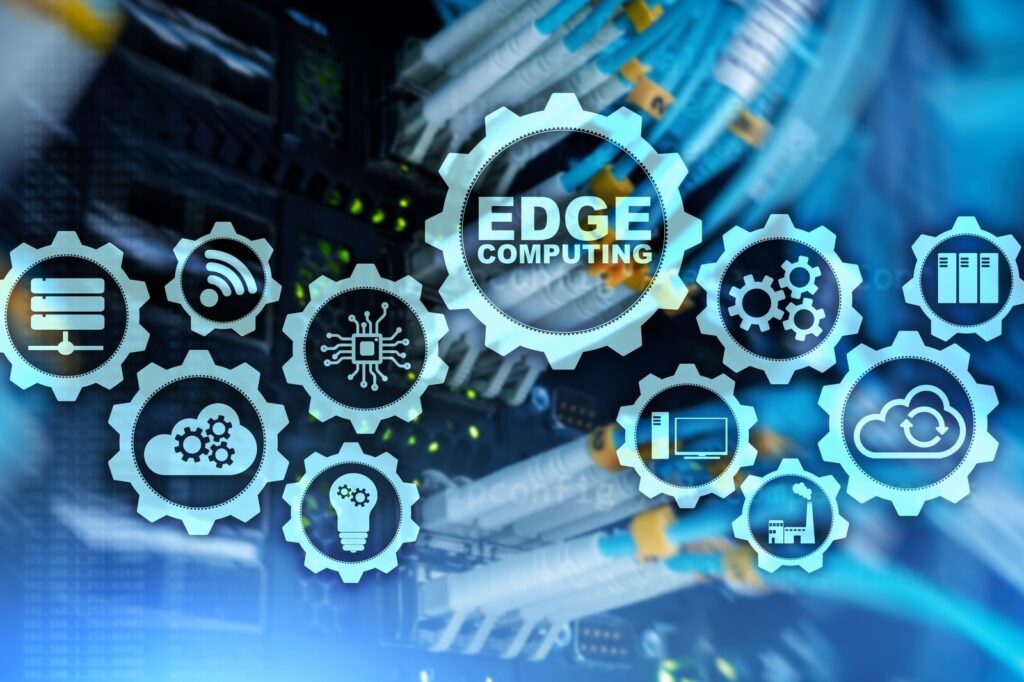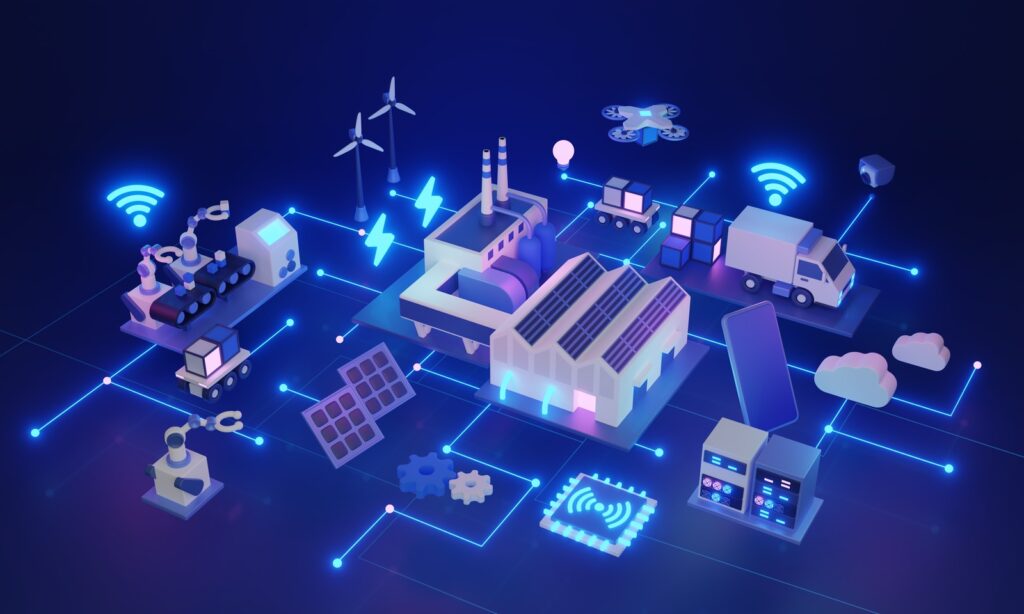What is Edge AI, why is it important, and how is it shaping industries like healthcare, manufacturing, and retail? Let's unpack the potential of this revolutionary technology, its benefits, its challenges, and what the future holds.
Artificial Intelligence (AI) has become a household term, powering our devices, automating tasks, and delivering insights at an unprecedented pace.
Edge devices pushes the boundaries of traditional AI, bringing computation and intelligence to the edge of networks, closer to where data is generated.
What Is Edge AI Technology and Why Does It Matter?

To put it simply, Edge AI technology refers to running AI machine learning algorithms locally—on edge devices such as smartphones, smart cameras, or sensors—without needing to connect to centralised cloud computing servers.
Edge devices use AI algorithms and deep learning models to process, analyse and take action on data in real-time, without depending on remote cloud computing storage or processing.
This results in faster decision-making, reduced latency, enhanced privacy and security, and improved cost efficiency for businesses.
Edge Computing and Artificial Intelligence

Edge computing refers to processing data on devices closer to where it is generated, rather than sending it back and forth between centralised servers. This approach reduces latency and enhances real-time decision making capabilities.
Cloud Data Centres have played a vital role in processing large amounts of sensitive data, but as the volume and speed of data generation increases, it is no longer feasible to rely solely on these centralised systems.
Deep learning algorithms integrate with edge computing, enabling devices to perform complex tasks such as image recognition, natural language processing, or predictive analytics without needing to connect to the cloud. This means that decisions can be made quickly and efficiently at the edge of networks where the data is being generated.
Key Benefits of Edge AI

The adoption of Edge is surging because of the undeniable advantages it offers. Here's why organisations are taking notice:
1. Reduced Latency for Real-Time Responses
One of the standout benefits of Edge AI is the drastically reduced latency. Without relying on cloud computing servers to process data, Edge enables almost instantaneous decision-making. For example, autonomous vehicles equipped with Edge devices can analyse road conditions and avoid collisions in milliseconds—critical in life-or-death situations.
Example: A smart factory uses Edge powered sensors to detect equipment failures in real time, responding instantly to avoid costly downtime.
2. Enhanced Security and Data Privacy
Data security is a significant concern, especially for industries handling sensitive data information, such as healthcare or finance. Since Edge models process sensitive data locally rather than sending it to the cloud, it lowers the risk of exposure to security breaches.
Example: Edge devices in healthcare can analyse patient vitals directly on wearable devices, keeping personal data private.
3. Cost Efficiency Through Reduced Cloud Computing Dependency
Constantly transferring data to and from cloud computing servers can be expensive, especially for operations needing real-time analysis. Edge computing reduces this dependency, cutting operational costs.
Example: A retail chain using Edge devices for customer foot traffic analysis can avoid hefty cloud storage fees by processing data locally at their stores.
Real-World Applications of Edge AI Devices

The versatility of Edge devices has led to its implementation across an array of sectors. Here are some key real-world use cases:
Manufacturing
Smart factories are becoming the backbone of Industry 4.0, and Edge AI is a core driver of this transformation. Manufacturers use Edge AI to monitor equipment health, automate quality control, and optimise production lines.
Case in Point: A leading car manufacturer has implemented Edge AI device to inspect vehicle components on production lines. The AI detects defects in seconds with unmatched accuracy, reducing waste and downtime.
Healthcare
Healthcare providers use Edge devices for faster diagnostics, streamlined patient monitoring, and personalised treatment plans. Wearable connected devices and medical imaging tools with Edge computing capabilities are transforming how care is delivered.
Case in Point: Edge AI-enabled ultrasound machines can provide real-time imaging analyses to detect abnormalities without relying on external servers.
Retail
Retailers are using Edge models to deliver hyper-personalised shopping experiences, improve inventory management, and streamline checkout processes.
Case in Point: Smart shelves equipped with Edge devices can track inventory levels and send automatic alerts when stock runs low, ensuring seamless replenishment.
Challenges and Considerations in Edge AI

While Edge computing offers immense promise, it isn’t without its challenges. These are some factors businesses need to consider when implementing it:
1. Data Privacy Compliance
Edge computing processes data locally, but companies must still ensure compliance with regulations such as GDPR (General Data Protection Regulation). Managing data securely across devices can be complex and requires robust protocols.
2. Complex Deployment Models
Deploying Artificial intelligence AI models to edge devices can be a logistical puzzle, especially when scaling across multiple locations. Tools for optimisation, model compatibility, and version control are essential here.
3. Hardware Limitations
Unlike powerful cloud servers, edge devices often have limited storage and processing capacity. Companies may need specialised hardware or lightweight AI models to ensure efficient functioning.
The Future of Edge AI

The evolution of Edge computing is set to redefine how industries process cloud data centres and deliver solutions. Here are key trends and predictions for its future:
- 5G and Edge AI Combine
The rollout of 5G networks will serve as a catalyst for the growth of Edge AI. With faster and more reliable connectivity, Edge AI applications will become even more efficient and far-reaching.
- AI-Powered Smart Cities
Governments worldwide are exploring how Edge devices can make urban living smarter and more sustainable. Applications like AI-powered traffic lights and waste management systems are just the beginning.
- Personalised AI for Consumers
From fitness trackers to personalised virtual assistants, Edge AI will enable devices to learn and adapt to individual users, creating highly tailored experiences.
- Green AI Initiatives
Edge technology won't just be more efficient—it will also contribute to sustainability. By reducing reliance on energy-hungry data centres and cutting down data transmission, it offers a greener alternative to traditional AI models.
- Edge AI Smart Home Devices
As smart home technology becomes more mainstream, Edge devices will play a pivotal role in its advancement. From energy management to edge AI security, these edge devices will make our homes safer and smarter.
Harnessing the Power of Edge AI Models
Edge AI is more than just a technological trend—it’s a paradigm shift reshaping industries, improving efficiency, enhancing security, and driving cost savings. From manufacturing floors to hospital rooms, Edge computing is empowering organisations to make smarter, faster, and safer decisions.